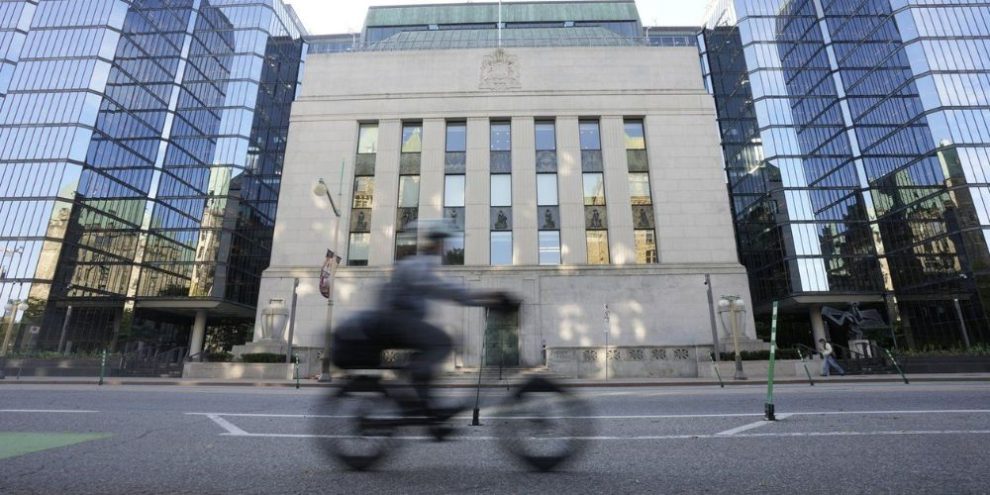
The Canadian economy was showing more cracks in August, but most economists weighing in on the latest data say they don't think the Bank of Canada will respond with more rate cuts anytime soon.
Real gross domestic product declined 0.3 per cent in August and early signs suggest the economy barely managed any growth in the third quarter, Statistics Canada said Friday.
Goods-producing industries were down in August for the fifth time this year while the services side contracted for the first time in six months, StatCan said.
The agency said August’s decline mostly offsets a gain of 0.3 per cent in real GDP for July, which was revised a tick higher from earlier estimates. StatCan had initially expected flat growth for August.
Barrie's News Delivered To Your Inbox
By submitting this form, you are consenting to receive marketing emails from: Central Ontario Broadcasting, 431 Huronia Rd, Barrie, Ontario, CA, https://www.cobroadcasting.com. You can revoke your consent to receive emails at any time by using the SafeUnsubscribe® link, found at the bottom of every email. Emails are serviced by Constant Contact
A work stoppage among Air Canada flight attendants hampered air transportation activity in August. That subsector was down 4.6 per cent in the month, its steepest decline since the COVID-19 pandemic.
Drought conditions constrained hydroelectric power generation, the agency said, throttling overall output from the utilities sector.
The wholesale trade industry and the mining and quarrying subsectors also posted declines, partially offset by growth in retail trade.
While August's drop in GDP was a bit of a surprise, Royal Bank economist Abbey Xu said the upward revision for July means the third quarter is still tracking close to RBC's forecasts.
StatCan's advance estimates for September call for a gain of 0.1 per cent in real GDP and annualized growth of 0.4 per cent for the third quarter. That’s a tad below the Bank of Canada’s forecast for the quarter released earlier this week.
Xu said there are still risks that non-residential business investment continues to underwhelm, but RBC expects consumer spending will be resilient enough to help Canada's economy avoid a steeper downturn in the third quarter.
"It's a small positive number, so avoiding a recession following the huge contraction in the prior quarter," she said.
StatCan said the Canadian economy shrank 1.6 per cent on an annualized basis in the second quarter as tariffs from the United States drove a sharp decline in exports.
Oxford Economics senior economist Michael Davenport said in a note Friday that Canada's economy is teetering on a technical recession with roughly flat growth expected for the third quarter.
Whether economic data meets the traditional definition of a recession — two consecutive quarters of real GDP decline — Davenport said he expects the economy "will struggle to grow in the near term and remain vulnerable to further trade-related disruptions."
The tariff-sensitive manufacturing industry posted a decline of 0.5 per cent in August, but the early look at September’s real GDP figures show the sector might have rebounded last month.
The Bank of Canada signalled that it may be finished with rate cuts following its quarter-point reduction on Wednesday, which left the benchmark interest rate at 2.25 per cent.
Governor Tiff Macklem said it would take a material change in the economy compared to the central bank's baseline forecasts to warrant further easing.
Xu said "the messaging is still the same" with Q3 GDP largely lining up with the Bank of Canada's expectations. RBC is not forecasting any rate changes from the central bank until at least the end of 2026.
Financial markets were placing the odds of a hold at the Bank of Canada's next rate announcement on Dec. 10 at more than 90 per cent as of Friday afternoon, according to LSEG Data & Analytics.
Benjamin Reitzes, BMO's managing director of Canadian rates and macro strategist, said in a note to clients Friday that one-time factors like drought and the Air Canada labour disruption will be reversed going forward.
The Toronto Blue Jays post-season run will also provide a lift to the October GDP figures, he said, and next week's federal budget should also offer fiscal stimulus for the economy.
"We'll need to see more weakness than this to spook the Bank of Canada after this week's messaging that they're happy to move to the sidelines as long as the economy performs in line with its forecast," Reitzes said.
Meanwhile, Davenport said there's plenty more data to come before the Bank of Canada's final rate decision of the year. He said there's a "small chance" of another rate cut or two if the labour market and GDP figures undershoot the central bank's expectations.
This report by The Canadian Press was first published Oct. 31, 2025.





